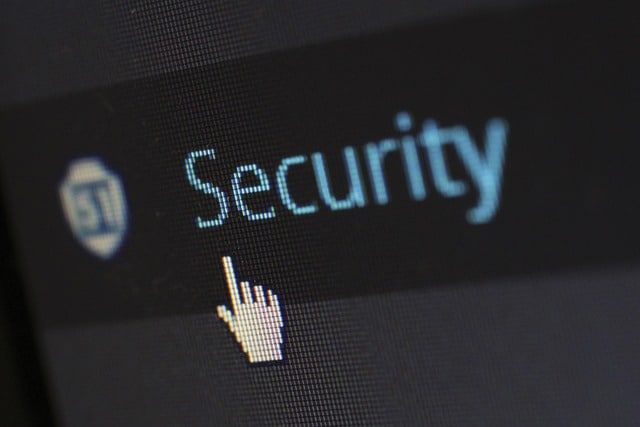Blockchain technology has revolutionized various industries by facilitating secure and transparent digital transactions. However, ensuring the security of the blockchain is crucial for its widespread adoption. In this article, we will explore the world of blockchain security, examining how it safeguards the digital ledger and protects against potential attacks.
To ensure robust security, blockchain employs fundamental mechanisms such as cryptographic algorithms, consensus protocols, and decentralization. These mechanisms ensure that the blockchain remains resistant to tampering and unauthorized access. By utilizing cryptographic algorithms, blockchain secures the data stored within the ledger, making it virtually impossible for malicious actors to alter or manipulate the information.
Consensus protocols, on the other hand, enable multiple participants in the blockchain network to reach an agreement on the validity of transactions. This consensus mechanism ensures that any attempts to modify or forge transactions are quickly identified and rejected by the network.
Decentralization plays a significant role in blockchain security by distributing the ledger across a network of nodes. This distributed nature eliminates the reliance on a single point of failure, making it extremely difficult for hackers to compromise the entire system.
Despite these security measures, blockchain networks can still be targeted by various types of attacks. Some common attacks include 51% attacks, where a single entity gains control of the majority of the network’s computing power, and Sybil attacks, where an attacker creates multiple false identities to gain control over the network. These attacks exploit the vulnerabilities in the blockchain network and can result in significant financial losses and reputational damage.
To safeguard blockchain systems, organizations can implement a range of security measures. These measures include multi-factor authentication, encryption of data, regular audits, and robust access control policies. Multi-factor authentication adds an extra layer of security by requiring users to provide multiple forms of identification before accessing the blockchain network. Encryption ensures that data stored on the blockchain remains confidential and protected from unauthorized access. Regular audits help identify any potential security weaknesses or vulnerabilities, allowing organizations to take proactive measures to address them. Finally, robust access control policies limit the privileges of users within the blockchain network, reducing the risk of insider threats.
Looking ahead, the future of blockchain security lies in the development of advanced technologies and protocols. Innovations such as zero-knowledge proofs and secure hardware enclaves hold promise in further enhancing the security of blockchain networks. These advancements will enable organizations to leverage the full potential of blockchain technology while ensuring the integrity and confidentiality of their data.
In conclusion, blockchain security is essential for the widespread adoption of this transformative technology. By employing cryptographic algorithms, consensus protocols, and decentralization, blockchain ensures the integrity and security of digital transactions. Organizations can further enhance blockchain security by implementing multi-factor authentication, encryption, regular audits, and robust access control policies. With ongoing advancements in blockchain security, the future holds even greater possibilities for the secure and widespread utilization of this groundbreaking technology.
How Blockchain Ensures Security
Blockchain ensures security through the effective utilization of cryptographic algorithms, decentralized consensus mechanisms, and secure key management.
Cryptographic algorithms play a critical role in securing the blockchain. They encrypt and decrypt data, allowing only authorized parties to access and modify it. By employing robust algorithms like SHA-256 or ECC, blockchain technology can effectively protect against unauthorized tampering and ensure transaction authenticity.
Decentralized consensus mechanisms further enhance blockchain security. Blockchain networks use consensus algorithms like PoW or PoS to validate and verify transactions. This decentralized approach ensures that no single entity has control over the network, making it more resilient to attacks.
Additionally, blockchain security is maintained through the use of public and private key pairs. Public keys encrypt data, while private keys decrypt and access it. These keys are generated using complex mathematical algorithms, making them difficult to crack.
Types of Blockchain Attacks
Blockchain networks are vulnerable to various attacks that can compromise the security and integrity of the digital ledger. These attacks exploit vulnerabilities in the blockchain system, aiming to manipulate or steal data, disrupt the network, or compromise the consensus mechanism. Understanding these attacks is crucial for implementing effective security measures.
One common attack is the 51% attack, where a malicious actor gains control of the majority of the network’s computing power. With this control, they can manipulate the transaction history, double-spend coins, or exclude certain transactions from being confirmed.
Another attack is the Sybil attack, where an attacker creates multiple fake identities to gain control or influence over the network. This can be used to manipulate consensus or launch other attacks.
Other attacks include the Distributed Denial of Service (DDoS) attack, where the network is overwhelmed with a flood of requests, rendering it unable to function properly. Smart contract vulnerabilities can also be exploited, allowing attackers to manipulate or steal funds. Additionally, blockchain networks can be targeted through social engineering, phishing, or malware attacks, compromising the security of user wallets or private keys.
To mitigate these attacks, various security measures can be implemented, such as encryption, multi-factor authentication, and regular code audits. Consensus mechanisms like proof of work or proof of stake can also enhance security by making attacks more costly or difficult to execute.
As blockchain technology evolves, it is crucial to continually adapt and improve security measures to stay ahead of emerging threats.
Implementing Security Measures
To ensure the protection of the digital ledger, it is crucial to implement robust security measures in the blockchain ecosystem. With the ever-growing number of cyber threats and the potential for malicious attacks, organizations must prioritize the security of their blockchain networks.
Below are three essential security measures that can be implemented:
- Encryption: Encryption plays a vital role in securing the blockchain. By encrypting data, sensitive information is transformed into a format that can only be deciphered by authorized parties with the corresponding decryption keys. This ensures that even if an attacker gains access to the data, it remains unreadable and protected.
- Access Control: Implementing access control mechanisms is crucial to prevent unauthorized individuals from tampering with the blockchain. By employing authentication protocols, such as user credentials or digital signatures, organizations can ensure that only trusted entities can interact with the blockchain. Additionally, role-based access control can limit the actions and permissions of different users, reducing the risk of unauthorized modifications.
- Immutable Audit Trails: Maintaining an immutable audit trail is essential for detecting and mitigating security breaches in the blockchain. By recording every transaction and change made to the ledger, organizations can easily identify any suspicious activity and trace it back to its source. This enables prompt response and investigation, thereby enhancing the overall security of the blockchain ecosystem.
Enhancing Blockchain Security
Enhancing blockchain security involves implementing advanced measures to protect against potential threats and attacks. It is crucial to ensure the integrity and confidentiality of the data stored within the network as blockchain technology gains momentum. Malicious actors are constantly looking for ways to exploit vulnerabilities, making it necessary to counter these threats with various security measures.
One fundamental aspect of enhancing blockchain security is the implementation of robust encryption techniques. By encrypting the data stored on the blockchain, unauthorized access to sensitive information can be prevented. Additionally, blockchain platforms can utilize advanced cryptographic algorithms to secure transactions, ensuring that only authorized parties can access and modify the data.
Another essential security measure is the use of consensus mechanisms. Consensus mechanisms, such as proof of work or proof of stake, validate transactions and ensure that the majority of participants agree on the state of the blockchain. This consensus process adds an additional layer of security by making it extremely difficult for malicious actors to manipulate the data stored on the blockchain.
Furthermore, regular audits and vulnerability assessments are crucial for identifying and mitigating potential security risks. By conducting thorough security audits, any weaknesses or vulnerabilities in the blockchain network can be identified and addressed promptly. Additionally, implementing multi-factor authentication and access controls can further enhance the overall security of the blockchain.
Future Advancements in Blockchain Security
Future advancements in blockchain security will focus on strengthening authentication methods and implementing advanced machine learning algorithms.
The best VPNs to change the Netflix region should not be blocked by the streaming platform. Netflix can block certain IP addresses if the IP address performs unusual traffic.
As the blockchain continues to evolve, new challenges and threats emerge, requiring improved security measures to protect the integrity and privacy of the digital ledger.
The benefits of a VPN are listed below.
- Enhanced Authentication: Blockchain networks are built on the principle of cryptographic signatures to verify transactions. However, traditional authentication methods may not be sufficient to combat sophisticated attacks. Future advancements will explore the use of multi-factor authentication, biometrics, and other innovative techniques to strengthen the authentication process and ensure the integrity of transactions.
- Advanced Machine Learning Algorithms: Machine learning algorithms have the potential to revolutionize blockchain security. By analyzing large volumes of data, these algorithms can identify patterns and anomalies that may indicate malicious activities. Future advancements will leverage machine learning to detect and prevent attacks such as double-spending, Sybil attacks, and 51% attacks, enhancing the overall security of the blockchain.
- Privacy Enhancements: While the blockchain provides transparency and immutability, it also raises concerns about privacy. Future advancements will focus on developing privacy-enhancing technologies, such as zero-knowledge proofs and homomorphic encryption, to protect sensitive information while still maintaining the benefits of a decentralized ledger.
Frequently Asked Questions
Are There Any Limitations to Blockchain Technology in Terms of Security?
Blockchain technology, although considered secure, is not without its limitations. One such limitation is the potential for 51% attacks, where a single entity gains control of the majority of the network’s computing power, allowing them to manipulate transactions. Additionally, smart contracts, which are automated agreements on the blockchain, can be vulnerable to coding errors or exploits, potentially compromising the security of the entire system. Privacy concerns also arise due to the transparent nature of blockchain, as certain sensitive information may be exposed. However, ongoing research and development efforts are focused on addressing these limitations and enhancing the overall security of blockchain technology.
What Are Some Real-World Examples of Successful Blockchain Attacks?
Some real-world examples of successful blockchain attacks include the 51% attack on the Ethereum Classic network in 2019, the DAO attack in 2016, and the Mt. Gox exchange hack in 2014. These incidents serve as important reminders of the need for strong security measures to protect the integrity of the digital ledger.
How Do Blockchain Networks Handle the Issue of Scalability Without Compromising Security?
Blockchain networks employ various mechanisms such as sharding, off-chain transactions, and layer 2 solutions to address the issue of scalability while ensuring security. These techniques enhance throughput, reduce latency, and maintain the integrity and immutability of the blockchain.
Sharding is one approach used by blockchain networks to improve scalability. It involves dividing the network into smaller partitions, or shards, which can process transactions independently. By distributing the workload across multiple shards, the network can handle a larger number of transactions simultaneously, thereby increasing scalability.
Off-chain transactions are another method employed to enhance scalability without compromising security. Instead of recording every transaction directly on the blockchain, off-chain transactions are conducted through secondary channels. These channels allow for faster and more efficient transactions, as they are not subject to the same constraints as the main blockchain. Once the off-chain transactions are completed, the final outcome is then recorded on the blockchain, ensuring the security and immutability of the transaction history.
Layer 2 solutions are additional protocols built on top of the underlying blockchain network. These solutions enable the execution of transactions off-chain, while still leveraging the security of the blockchain. By offloading certain processes to these secondary layers, the main blockchain is relieved of some of the processing burden, resulting in improved scalability.
Can Blockchain Technology Be Used to Secure Other Types of Digital Assets Beyond Financial Transactions?
Blockchain technology has the potential to secure a wide range of digital assets beyond financial transactions. Its decentralized and immutable nature ensures the integrity of data, while cryptographic techniques provide secure access control and authentication. As a result, blockchain can be applied to various industries, offering a reliable and trustworthy solution for securing different types of digital assets.
What Role Does Cryptography Play in Ensuring the Security of Blockchain Networks?
Cryptography plays a critical role in ensuring the security of blockchain networks. It incorporates encryption and authentication mechanisms that safeguard the integrity and confidentiality of data, thereby making it extremely difficult for unauthorized parties to manipulate the blockchain. By employing cryptographic techniques, blockchain networks can protect transactions, verify identities, and maintain the overall security of the system.
Conclusion
Blockchain security plays a crucial role in ensuring the widespread adoption and success of this technology. By utilizing cryptographic algorithms, consensus protocols, and decentralization, blockchain networks can effectively protect the digital ledger and mitigate various types of attacks.
Strengthening the security of blockchain systems can be achieved through the implementation of robust measures such as multi-factor authentication, encryption, and regular audits.
As technology advances and new trends emerge, the future of blockchain security looks promising, promising enhanced protection for digital transactions.






Comments (No)